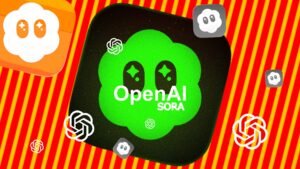
Google Bard is an exciting new experiment in conversational AI developed by Google. It harnesses the power of LaMDA, an advanced AI technology, to offer users a creative and helpful collaboration experience. Bard is capable of answering questions, generating text, translating languages, and crafting various forms of creative content.
Though still in its early stages of development, Bard has already exhibited impressive abilities to follow instructions, provide comprehensive answers, and generate diverse creative outputs like poems, code, scripts, and more.
Google Bard is an experimental AI chat service developed by Google. Similar to ChatGPT, Bard is designed to engage in conversations and provide information, but it pulls its knowledge from the web. It can code, solve math problems, and assist with writing tasks like other AI chatbots. Bard was announced on February 6 by Google CEO Sundar Pichai and initially used the Language Model for Dialogue Applications (LaMDA). It has now been upgraded to use PaLM 2, Google’s advanced large language model unveiled at Google I/O 2023.
Initially, access to Google Bard was limited, but it was made available to the general public at Google I/O. The chat service supports multiple languages, including Japanese and Korean, with plans to add support for 40 more languages. Google Bard has also been updated to include image responses, displaying relevant pictures when appropriate.
Google Bard faced controversy during its launch, as it provided inaccurate information about the James Webb Space Telescope during a demo. The chatbot’s performance received negative feedback, with users experiencing longer wait times, lack of automatic sources, and poorer performance compared to competitors like ChatGPT and Bing Chat. Google’s decision to unveil Bard was likely influenced by the success of ChatGPT, as well as Microsoft’s release of an AI-improved Bing.
Google has other AI services in development, including Imagen, an AI image generator, and MusicLM, an AI music generator. However, these services have not been released to the public yet due to concerns about creative content misappropriation and biases in training data.
Unlocking Creativity with Google Bard
Bard serves as a catalyst for creativity, enabling users to generate fresh ideas, solve problems innovatively, and create engaging content. By utilizing Bard, individuals can unlock their creative potential in a variety of domains. Here are a few examples:
- Writing: Bard can assist in creating poems, stories, songs, and marketing campaigns. Its ability to generate text in different creative formats opens up endless possibilities for writers and content creators.
- Productivity: Bard empowers users to automate tasks, conduct research, and develop presentations. From booking flights to exploring new topics, Bard can save time and streamline workflows.
- Learning: Bard becomes an invaluable tool for learning, practicing skills, and receiving feedback. Whether one wishes to learn a new language, master a musical instrument, or improve their writing, Bard provides personalized guidance and assistance.
Mechanism Behind Bard
Bard operates on a foundation of a large language model (LLM), an AI system capable of generating text, translating languages, and answering questions. LLMs, like Bard, are trained on extensive datasets comprising vast amounts of text and code. Through this training, LLMs identify patterns within the data and learn to perform a multitude of tasks.
To comprehend user queries, Bard employs a process of breaking down the query into smaller parts and searching for relevant patterns within the data. Once the query is understood, Bard generates a response by selecting the most appropriate words and phrases based on the identified patterns. As Bard continues to learn and evolve, its capabilities will further expand, making it increasingly powerful.

The Promising Future of Bard
Though still in its nascent stages, Bard exhibits immense potential to transform the way we work, learn, and create. As Bard continues to develop, it promises several exciting advancements:
- Automation: Bard has the potential to automate tasks currently performed by humans, freeing up valuable time for individuals to focus on more creative and productive endeavors.
- Personalized Learning: Bard can provide tailored learning experiences that adapt to each individual’s specific needs and interests, revolutionizing the way we acquire knowledge.
- Art and Entertainment: Bard has the ability to fuel the creation of new art forms and immersive entertainment experiences, elevating the realms of creativity and engagement.
The possibilities presented by Bard are boundless. It represents a revolutionary tool capable of reshaping our lives, work, and educational experiences.
Exploring the Power of Google Bard
Google Bard, a large language model chatbot developed by Google AI, has been trained on an extensive dataset of text and code. This powerful tool has already mastered several tasks, including:
- Following Instructions: Bard thoughtfully completes requests and instructions provided by users.
- Comprehensive Question Answering: Bard offers detailed and informative responses to a wide range of questions, even if they are challenging, open-ended, or unusual.
- Creative Text Generation: Bard excels at generating various creative text formats, such as poems, code, scripts, musical pieces, email compositions, and letters.
Although still in beta, Bard is available to the public for free, and interested individuals can sign up for a free account on the official Bard website.
Empowering Users with Bard’s Abilities
Bard boasts an array of functionalities, empowering users to accomplish numerous tasks with ease. Here are some of the ways you can leverage Bard’s capabilities:
- Query Assistance: Bard possesses access to real-world information through Google Search, enabling it to provide consistent and reliable responses to user queries.
- Creative Content Generation: Bard can write poems, code snippets, scripts, musical compositions, and other creative works, expanding possibilities for artistic expression.
- Language Translation: Bard excels in translating over 100 languages, fostering effective communication across linguistic barriers.
- Collaboration: Bard serves as a collaborative partner, assisting in brainstorming sessions, code writing, and presentation creation.
Bard is a versatile and dynamic tool that holds the potential to revolutionize our interactions with computers and enhance our daily lives.
Benefits of Utilizing Bard
Engaging with Bard can yield a myriad of advantages across various aspects of life. Here are a few potential benefits:
- Increased Productivity: By automating tasks and providing project assistance, Bard helps users save time and accomplish more within their work and personal lives.
- Enhanced Creativity: Bard acts as a catalyst for creativity by providing valuable feedback, suggesting ideas, and encouraging fresh perspectives.
- Improved Communication: With its language translation capabilities and comprehensive question answering, Bard facilitates effective communication, ensuring seamless understanding and engagement.
Bard is a powerful tool with the potential to reshape our lives and work. Though still in development, it is already being utilized by individuals and organizations from diverse backgrounds. Whether seeking to boost productivity, foster creativity, or improve communication, Bard offers an exciting avenue for exploration.







Welcome to our comments section!
We value your feedback and encourage you to share your thoughts in the comment section. Let’s keep the conversation meaningful, respectful, and inclusive.
For the best user experience, commenting is closed after an article has been posted for seven days. Please ensure your comments align with our Community Guidelines.